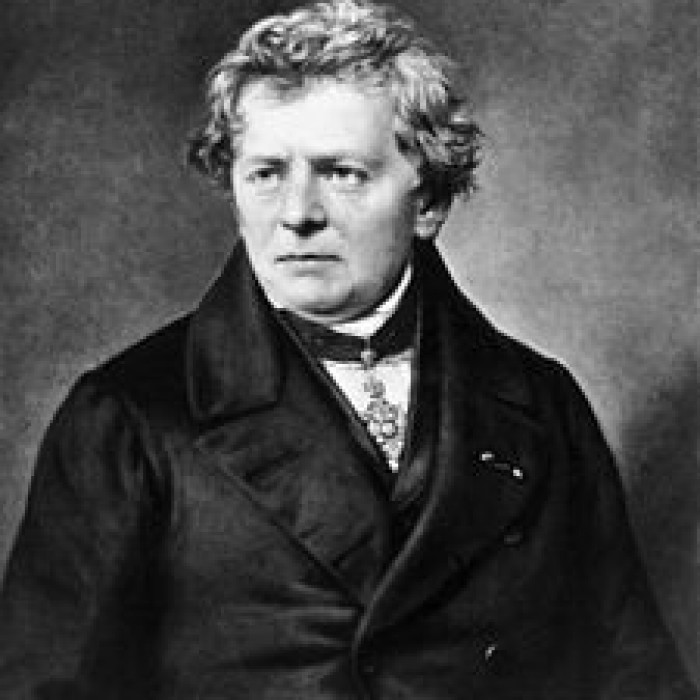
Georg Simon Ohm (16 March 1789 – 6 July 1854) was a German physicist and mathematician.
As a school teacher, Ohm began his research with the new electrochemical cell, invented by Italian scientist Alessandro Volta.
Using equipment of his own creation, Ohm found that there is a direct proportionality between the potential difference (voltage) applied across a conductor and the resultant electric current. This relationship is known as Ohm's law.
Georg Simon Ohm was born into a Protestant family in Erlangen, Brandenburg-Bayreuth (then a part of the Holy Roman Empire), son to Johann Wolfgang Ohm, a locksmith and Maria Elizabeth Beck, the daughter of a tailor in Erlangen.
Although his parents had not been formally educated, Ohm's father was a respected man who had educated himself to a high level and was able to give his sons an excellent education through his own teachings.
Of the seven children of the family only three survived to adulthood: Georg Simon, his younger brother Martin, who later became a well-known mathematician, and his sister Elizabeth Barbara. His mother died when he was ten.
From early childhood, Georg and Martin were taught by their father who brought them to a high standard in mathematics, physics, chemistry and philosophy.
Georg Simon attended Erlangen Gymnasium from age eleven to fifteen where he received little in the area of scientific training, which sharply contrasted with the inspired instruction that both Georg and Martin received from their father.
This characteristic made the Ohms bear a resemblance to the Bernoulli family, as noted by Karl Christian von Langsdorf, a professor at the University of Erlangen.
Georg Ohm's father, concerned that his son was wasting his educational opportunity, sent Ohm to Switzerland. There in September 1806 Ohm accepted a position as a mathematics teacher in a school in Gottstadt bei Nidau.
Karl Christian von Langsdorf left the University of Erlangen in early 1809 to take up a post in the University of Heidelberg and Ohm would have liked to have gone with him to Heidelberg to restart his mathematical studies.
Langsdorf, however, advised Ohm to continue with his studies of mathematics on his own, advising Ohm to read the works of Euler, Laplace and Lacroix.
Rather reluctantly Ohm took his advice but he left his teaching post in Gottstatt Monastery in March 1809 to become a private tutor in Neuchâtel.
For two years he carried out his duties as a tutor while he followed Langsdorf's advice and continued his private study of mathematics. Then in April 1811 he returned to the University of Erlangen.
Ohm's own studies prepared him for his doctorate which he received from the University of Erlangen on October 25, 1811.
He immediately joined the faculty there as a lecturer in mathematics but left after three semesters because of unpromising prospects. He could not survive on his salary as a lecturer.
The Bavarian government offered him a post as a teacher of mathematics and physics at a poor quality school in Bamberg which Ohm accepted in January 1813.
After his assignment in Bamberg, Ohm sent his completed manuscript to King Wilhelm III of Prussia.
The King was satisfied with Ohm's book, and offered Ohm a position at the Jesuit Gymnasium of Cologne on 11 September 1817.
Ohm published Die galvanische Kette, mathematisch bearbeitet (The Galvanic Circuit Investigated Mathematically) in 1827.
Ohm's college did not appreciate his work and Ohm resigned from his position.
He then made an application to, and was employed by, the Polytechnic School of Nuremberg. Ohm arrived at the Polytechnic School of Nuremberg in 1833, and in 1852 he became a professor of experimental physics at the University of Munich.
In 1849, Ohm published Beiträge zur Molecular-Physik, (in English: Molecular Physics).
In the preface of this work he stated he hoped to write a second and third volume "and if God gives me length of days for it, a fourth".
He died in Munich in 1854, and is buried in the Alter Südfriedhof.
A collection of his family letters would be compiled in a German book, which shows that he used to sign some of his letters with the expression "Gott befohlen, G S Ohm, “meaning "Commended to God".
Ohm's law first appeared in the famous book Die galvanische Kette, mathematisch bearbeitet (tr., The Galvanic Circuit Investigated Mathematically) (1827) in which he gave his complete theory of electricity.
In this work, he stated his law for electromotive force acting between the extremities of any part of a circuit is the product of the strength of the current, and the resistance of that part of the circuit.
Ohm's acoustic law, sometimes called the acoustic phase law or simply Ohm's law, states that a musical sound is perceived by the ear as a set of a number of constituent pure harmonic tones. It is well known to be not quite true.
His writings were numerous. The most important was his pamphlet published in Berlin in 1827, with the title Die galvanische Kette mathematisch bearbeitet.
Although Ohm's work strongly influenced theory, at first it was received with little enthusiasm. However, his work was eventually recognized by the Royal Society with its award of the Copley Medal in 1841.
He became a foreign member of the Royal Society in 1842, and in 1845 he became a full member of the Bavarian Academy of Sciences and Humanities.
Ohm's name has been incorporated in the terminology of electrical science in Ohm's Law (which he first published in Die galvanische Kette...), the proportionality of current and voltage in a resistor, and adopted as the SI unit of resistance, the ohm (symbol Ω).
Source: Link

1564 - 1616

1803 – 1882

1854 – 1900

1942 – 2016

1928 – 2014

1835 – 1910

1869 – 1948
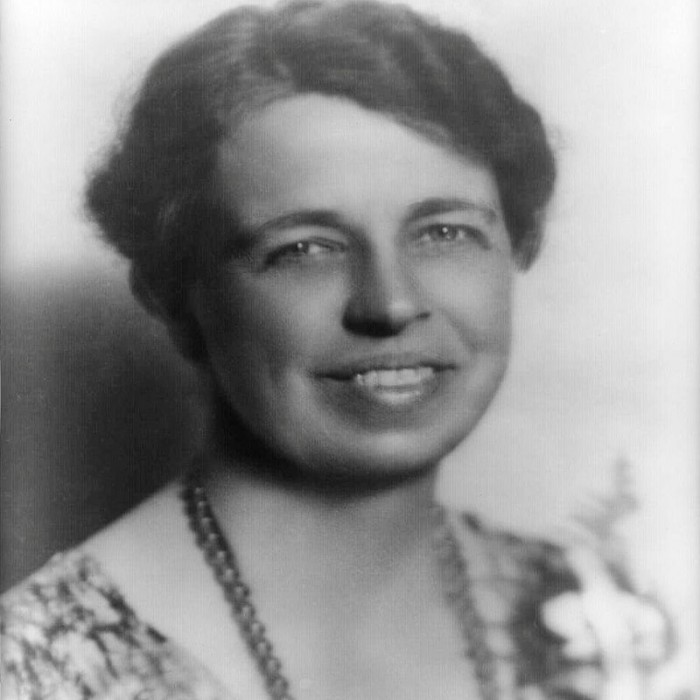
1884 – 1962
1898 – 1963

1929 – 1993
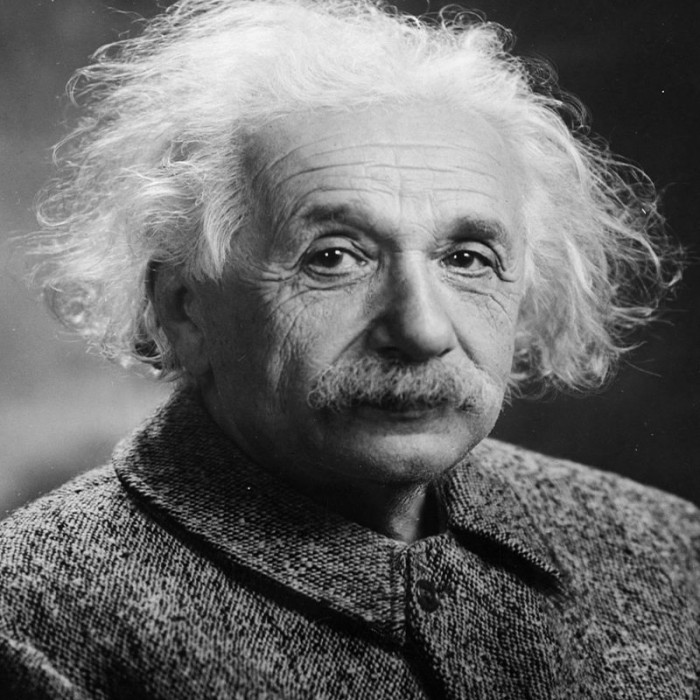
1879 – 1955

1809 – 1865
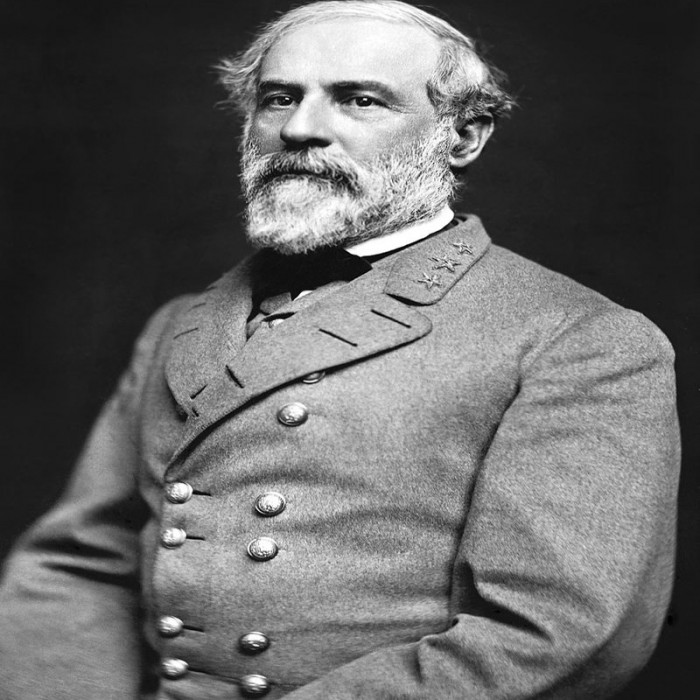
1807 – 1870

1800 – 1859

1795 – 1821
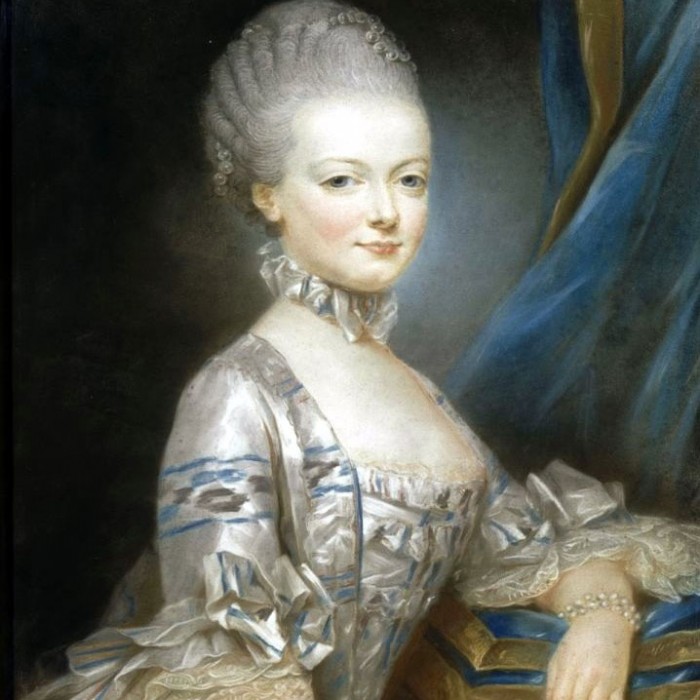
1755 – 1793

1984 -

1989 – 2011

1943 – 2001

1815 – 1902

1929 – 1994

1767 – 1848
